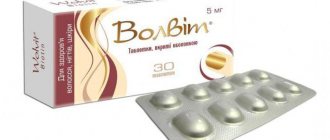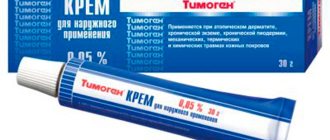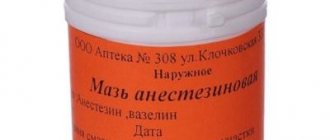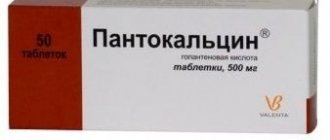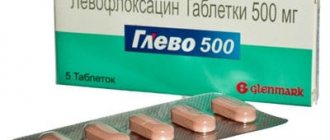- December 1, 2020
- Cardiology
- Evgenia Yushkova
About 90% of people who record an increase in blood pressure above 140 mmHg suffer from hypertension. It can occur without visible symptoms, and many simply do not notice the pathology. However, about 40% of the world's adults have this diagnosis. Moreover, before the age of 50, arterial hypertension occurs more often in the male half of humanity, and after 50 years - in the female half.
The first alarming symptom of the disease is headaches localized in the back of the head. Patients often complain of their occurrence in the morning, when waking up. There may be complaints of visual disturbances, “stars” flashing before the eyes, the appearance of tinnitus, rapid heartbeat, shortness of breath and pressing pain in the heart area.
If the manifestation of the disease is left unattended, the body can lead to arterial hypertension of the secondary (symptomatic) type. In this case, only constant use of medications under the supervision of a specialist will help.
To treat cardiovascular pathologies, doctors use drugs from the pharmacological series sartans (type II angiotensin receptor blockers). One of the effective medications that solve the problem of bringing blood pressure to normal is Telmisartan.
Along with this drug, drugs with similar effects are produced according to the instructions for use of Telmisartan analogues. According to reviews, analogues are inferior to the original in the speed of therapeutic effects.
Indications for use
Telmisartan blood pressure tablets are prescribed for the following pathologies:
- hypertension;
- prevention of cardiovascular diseases in people of the older age category (from 55 years);
- rehabilitation of patients who have suffered a stroke or heart attack.
Doctors strongly do not recommend self-treatment with this medication.
special instructions
Treatment with Telmisartan should be used with particular caution in patients with impaired renal function. Therapy should be carried out under strict medical supervision with mandatory monitoring of the condition of the renal apparatus.
Telmisartan tablets are often prescribed in combination with diuretics, which enhances the hypotensive effect. In this case, as well as during a preliminary salt-free diet, fluid deficiency in the body that occurs against the background of diarrhea or vomiting, there is a possibility of developing symptomatic arterial hypotension (excessive decrease in blood pressure), which goes away on its own and does not require special treatment.
In patients with diagnosed diabetes mellitus, therapy with Telmisartan increases the risk of cardiovascular pathologies, so it is important to pre-examine the patient to exclude cardiac diseases.
Effect on blood pressure
The action of Telmisartan is aimed at reducing blood pressure.
The active component of the drug is not excreted from the body throughout the day, which leads to stabilization of pressure for a sufficiently long period of time.
This is very important for monitoring blood pressure levels in the early morning hours, when the patient is still sleeping, which makes the product stand out among its analogues. Doctors prescribe the drug for diabetics and obese people.
Don't tolerate high blood pressure
Now hypertension can be cured by restoring blood vessels...
>
Reviews about Telmisartan
According to doctors, Telmisartan is an effective antihypertensive drug. Its important advantage is the absence of an effect on heart rate, which allows the drug to be prescribed to patients with concomitant cardiovascular diseases.
Patients also leave positive reviews about Telmisartan: the drug normalizes blood pressure, is well tolerated, and has an affordable price. There are virtually no reports of side effects, with dizziness and blurred vision mentioned in rare cases.
Release form
The product is available in tablet form. They are white or light yellow in color and have an elongated or round flat-cylindrical shape.
Depending on the pharmaceutical company, they are produced in cardboard packages that contain blisters or plastic jars. Blisters come in 5, 7, 10, 20 pcs., jars - 10, 20, 28, 30, 40, 50, 100 pcs.
Compound
Telmisartan tablets contain different concentrations of the active ingredient - 40 or 80 mg. The active ingredient of the drug is telmisartan. Depending on the dose, the amount of additional substances also varies.
| Additional components | Amount of substance depending on dose, mg | |
| 40 mg | 80 mg | |
| Milk sugar (lactose) | 296,85 | 474,9 |
| Caustic soda | 3,35 | 6,7 |
| Povidone | 12 | 24 |
| Meglumine | 12 | 24 |
| Croscarmellose sodium | 12 | 24 |
| Magnesium salt of stearic acid | 3,8 | 6,4 |
Caustic soda is also known by another name - sodium hydroxide.
Instructions for use
Taking the drug is not related to nutrition. The instructions for use of Telmisartan describe at what pressure the medicine can be used. The drug is prescribed to reduce blood pressure.
The treatment course begins with a dosage of 40 mg per day. It is taken once. If the effect is not achieved, the dose is increased to 80 mg. It is important to know that the drug acts according to a cumulative scheme and the maximum positive effect after starting treatment is achieved after 30 – 55 days.
For preventive purposes to strengthen the cardiovascular system, the recommended daily dose of Telmisartan 80 mg is 1 tablet. To minimize the risk of heart attack or stroke, the amount of medication taken remains the same. Reducing the amount of the drug may not give the expected result.
In some cases, with stage 1 hypertension, a positive trend in reducing blood pressure levels is observed with a daily dose of 20 mg.
Telmisartan is used to treat hypertension in combination with thiazide class diuretics. An example of such a diuretic is Hydrochlorothiazide.
Complex therapy with these drugs allows you to increase the daily consumption of Telmisartan to 160 mg. This treatment is used for stage 3 hypertension. At the same time, the effectiveness of the drug is clearly felt by patients.
Pharmacological properties
Pharmacodynamics
Telmisartan is a specific angiotensin II receptor antagonist (ARA II) (type AT1). It is characterized by high affinity for the AT1 subtype of angiotensin II receptors (AT II), through which the action of AT II is realized.
The drug displaces AT II from its connection with the receptor, but does not exhibit antagonistic properties in relation to it. The association with the AT1 receptor subtype is long-lasting.
Telmisartan does not bind to other subtypes of AT II receptors and has no affinity for other receptors, including AT2 receptors and other, less studied AT receptors. Their functional significance, as well as the effect of possible excessive stimulation of these receptors by angiotensin II, the concentration of which increases under the influence of telmisartan, have not been studied.
The drug reduces the plasma concentration of aldosterone. Does not affect the activity of renin in blood plasma. Does not block ion channels. It does not inhibit angiotensin-converting enzyme (ACE, kininase II), which also accelerates the degradation of bradykinin, so it does not cause side effects due to the influence of bradykinin (for example, dry cough).
Arterial hypertension
The use of telmisartan at a dose of 80 mg completely blocks the hypertensive effect of AT II. The hypotensive effect develops within approximately 3 hours after taking the first dose, persists for 24 hours and remains significant for up to 48 hours. A pronounced therapeutic effect usually develops after 4–8 weeks of regular use of the drug.
In arterial hypertension, telmisartan reduces systolic and diastolic blood pressure (BP) without affecting heart rate (HR).
After abrupt discontinuation of the drug, blood pressure levels return to their original values within a few days. Withdrawal syndrome does not develop.
According to comparative clinical studies, the hypotensive effect of telmisartan is comparable to that of drugs of other classes (for example, atenolol, hydrochlorothiazide, enalapril, lisinopril, amlodipine). However, dry cough in patients receiving telmisartan occurred significantly less frequently than in patients taking ACE inhibitors.
Prevention of cardiovascular diseases
In patients 55 years of age and older with a history of transient ischemic attack, stroke, coronary artery disease (CAD), peripheral arterial disease, and complications of type 2 diabetes mellitus (such as left ventricular hypertrophy, micro- or macroalbuminuria, retinopathy) related to group at risk for cardiovascular complications, telmisartan had an effect similar to that of ramipril in terms of reducing the primary composite endpoint of hospitalization due to chronic heart failure, non-fatal stroke, non-fatal myocardial infarction, and cardiovascular mortality.
Telmisartan, similar to ramipril, also demonstrated efficacy in reducing the incidence of secondary endpoints: non-fatal stroke, non-fatal myocardial infarction, and cardiovascular mortality.
The effectiveness of telmisartan in doses less than 80 mg in reducing the risk of cardiovascular mortality has not been studied.
Unlike ramipril, telmisartan was less likely to cause side effects such as dry cough and angioedema. However, while taking it, arterial hypotension occurred more often.
Pharmacokinetics
When administered orally, the drug is rapidly absorbed from the gastrointestinal tract. The bioavailability of telmisartan is approximately 50%. Concomitant food intake reduces the AUC (area under the pharmacological curve) by 6–19% depending on the dose (40–160 mg). 3 hours after administration of the drug, plasma concentration levels off regardless of the time of food intake.
It is assumed that a slight decrease in AUC may not cause a decrease in the therapeutic effect. There is no linear dependence of the plasma concentration of telmisartan on the dose taken. When using the drug in doses of more than 40 mg, the AUC and especially the maximum plasma concentration (Cmax) increase disproportionately.
Telmisartan is characterized by high binding to plasma proteins (more than 99.5%), mainly with alpha-1 acid glycoprotein and albumin. At steady state, the average apparent volume of distribution (Vd) is approximately 500 l.
Telmisartan is metabolized through conjugation with a glucuronide. The conjugate has no pharmacological activity.
The drug has biexponential decay pharmacokinetics with a terminal half-life (T1/2) of more than 20 hours. AUC and especially Cmax increase disproportionately with dose. There are no data confirming the clinical significance of the accumulation of telmisartan when taken in therapeutic doses.
After oral and intravenous administration, telmisartan is excreted mainly through the intestines, mainly unchanged. No more than 1% is excreted by the kidneys.
Total plasma clearance is approximately 1000 ml/min, hepatic blood flow is about 1500 ml/min.
Pharmacokinetics in special cases:
- gender: in women, Cmax and AUC of telmisartan are higher than in men, approximately 3 and 2 times, respectively, but no differences in the effectiveness of the drug were identified;
- elderly age: in patients aged less than and over 65 years, the pharmacokinetics of the drug do not differ significantly;
- renal function: in patients with renal failure, including those receiving hemodialysis, it is recommended to start treatment with a lower dose (20 mg); no adjustment of the usual therapeutic dose is required. Telmisartan is highly bound to plasma proteins and is not excreted during dialysis;
- liver function: in patients with liver failure, according to pharmacokinetic studies, the bioavailability of telmisartan reaches almost 100%. T1/2 does not change.
Side effects
The drug is well tolerated by patients, but has a fairly impressive list of possible adverse reactions.
Rarely happen:
- decrease in hemoglobin level in the blood;
- failure of sleep and wakefulness;
- anxiety, loss of strength, worsening mood;
- lack of coordination;
- loss of consciousness;
- slow heart rate;
- sudden rapid decrease in blood pressure;
- dyspnea;
- failure of breathing rhythm;
- painful cramps in the abdominal area;
- gastrointestinal disorders - diarrhea, nausea, vomiting;
- an increase in the level of creatinine in the body, which indicates a malfunction of the kidneys;
- pain in muscle tissue;
- involuntary contractions of the calf muscles;
- hives and severe itching;
- decreased concentration;
- headache;
- infections similar to symptoms of ARVI or influenza;
- hyperhidrosis;
- an increase in potassium concentration in the body, which can lead to arrhythmia;
- pain and tightness in the chest;
Very rare violations include:
- blood poisoning;
- infectious processes of the genitourinary system (cystitis) and respiratory tract;
- ENT infections – pharyngitis, sinusitis;
- a decrease in platelet levels, which can cause bleeding;
- blurred vision;
- increased heart rate;
- a sharp decrease in pressure when changing position (when getting out of bed);
- flatulence, belching;
- dry mouth;
- liver dysfunction and increased concentrations of liver enzymes in the bloodstream;
- hyperuricemia, which can cause gout;
- redness of the skin;
- Quincke's edema;
- eczema;
Reactions that occur extremely rarely in patients:
- inflammatory processes in tendon tissues;
- increased concentration of eosinophils in the body;
If you notice one or more of the above symptoms, you should immediately stop taking the drug and consult a doctor.
Contraindications
Telmisartan is not prescribed in the following cases:
- childhood and adolescence (up to 18 years);
- pregnancy and lactation;
- obstruction of the biliary tract;
- severe liver and kidney failure;
- not accepting fructose by the body;
- glucose-galactose malabsorption;
- hypersensitivity to the constituent components;
- increased production of the hormone aldosterone - Conn's syndrome, caused by the development of tumor processes in the adrenal glands.
People suffering from coronary artery disease, gastric or duodenal ulcers, who are prone to bleeding, need to periodically analyze their blood counts and listen to their own feelings.
The doctor is obliged to monitor the condition of patients to prevent complications from occurring.
Overdose
Signs of exceeding the dose of the active substance:
- a sharp decrease in blood pressure;
- acceleration or deceleration of heart rate;
- loss of coordination;
- increase in creatinine;
- renal failure.
Each individual symptom is treated. Hemodialysis is not used to eliminate an overdose.
Overdose
Information about overdose of telmisartan is limited.
Symptoms
The most prominent symptoms of telmisartan overdose were arterial hypotension and tachycardia; They also reported about bradycardia, confusion, elevation of serum creatinine and acute nitric deficiency.
Therapy.
Telmisartan is not removed from the body by hemodialysis. Patients should be monitored closely and should receive symptomatic and supportive therapy. Treat according to the hour after the overdose and the severity of the symptoms. It is recommended to vomit and/or flush the mouthpiece. In the event of an overdose, the actives of the vugilla can be blocked. Next, partial monitoring of the level of serum electrolytes and creatinine is carried out. If arterial hypotension occurs, patients should be placed in a supine position and undergo therapy aimed at increasing the volume of fluid and salt in the body.
Interaction with other drugs
Telmisartan is able to increase the effectiveness of other drugs used for the prevention and treatment of hypertension (Amlodipine, Baclofen, Amifostine). Therefore, when complex therapy, you should take this into account and start the course with a minimum dosage.
The use of nonsteroidal anti-inflammatory drugs, including acetylsalicylic acid, in weakened and dehydrated patients can cause the development of acute renal failure.
Combined use with cortecosteroid drugs minimizes the effectiveness of the drug.
Medicines with a diuretic effect enhance the effect of Telmisartan. However, you should avoid drugs that retain potassium in the body (Trimethoprim, Heparin, Cyclosporine).
Alcohol-containing, narcotic medications and antidepressants should be excluded.
Features of good stagnation
Vaginism
Treatment with angiotensin II receptor antagonists cannot be started during pregnancy. Since continued therapy is not strictly necessary for the patient who is planning to become pregnant, she should switch to alternative antihypertensive therapy, which may establish a safety profile for stopping the period of pregnancy. If vaginosis is established, treatment with angiotensin II receptor antagonists is necessary, and if necessary, alternative treatment should be developed (sections “Contraindications” and “Congestion during pregnancy” sti or yearning for the breast").
Pechinkova deficiency
Telmisartan-Tevane may be used in patients with cholestasis, obstructive diseases of the urinary system and severe liver failure, since telmisartan is mainly excreted from the urinary system. In patients with these illnesses, the hepatic clearance of telmisartan changes. Use Telmisartan-Teva with caution in patients with hepatic insufficiency of the lung and middle stage.
Renovascular hypertension
There is a clear risk of serious arterial hypotension and nitric insufficiency in patients with biliary stenosis of the nitric artery or stenosis of the nitric artery. when treated with drugs that affect the renin-angiotensin-aldosterone system.
Nirka deficiency and nirka transplantation
When taking the drug, you suffer from impaired blood function, it is recommended to periodically monitor the level of potassium and creatinine in your blood serum. Until now, there is no harm in administering the drug to patients with recent transplantation.
Reduced intravascular volume
Symptomatic hypotension, especially after the first dose of the drug, may occur in patients due to a change in the volume of circulating blood or hyponatremia, which results from intense diuretics and therapy, salt-free diets or diarrhea and vomiting. So, be sure to skim the traces before setting the drug. Before using the drug, it is necessary to normalize the sodium level and the volume of intravascular fluid.
Subsequent blockade of the renin-angiotensin-aldosterone system
There is evidence that the concomitant use of angiotensin-transforming enzyme inhibitors, angiotensin II receptor blockers, or aliskiren promotes the risk of developing hypotension and hyperkalemia and decreased function of nitric acid (including acute nicoric deficiency).
Therefore, the subsequent blockade of the renin-angiotensin-aldosterone system by the concomitant administration of ACE inhibitors, angiotensin II receptor blockers or aliskiren is not recommended (section “Interactions with other drugs”) Karskiy means and other types of mutual relations"). Since a continuous blockade is considered absolutely necessary, individuals may undergo continuous monitoring of the function of blood, electrolytes, and arterial pressure under the supervision of a specialist and at the discretion of the patient.
ACE inhibitors and angiotensin II receptor blockers should not be administered simultaneously to patients with diabetic nephropathy.
Other conditions that are accompanied by stimulation of the renin-angiotensin-aldosterone system
In patients, vascular tone of this function depends significantly on the activity of the renin-angiotensin-aldosterone system (for example, in patients with severe congestive heart failure or severe illness nirok, including stenosis of the artery), treatment with drugs that also affect the system, may cause acute arterial hypotension, hyperazotemia, oliguria, or, rarely, acute nitric deficiency.
Primary aldosteronism
If patients with primary aldosteronism do not respond to antihypertensive drugs that suppress the renin-angiotensin system, the use of telmisartan in such patients is not recommended.
Stenosis of the mitral and aortic valves, obstructive hypertrophic cardiomyopathy
As with other vasodilators, the drug should be administered with caution to patients with mitral and aortic stenosis or obstructive hypertrophic cardiomyopathy.
Hyperkalemia
Congestion of drugs that interfere with the renin-angiotensin-aldosterone system can cause hyperkalemia.
In patients with summer age, in patients with nitric deficiency, in patients with diabetes, in patients who immediately withdraw other drugs that can increase potassium levels, and/or in patients And with intercurrent illnesses, hyperkalemia can lead to death.
Before one-hour administration of drugs that suppress the renin-angiotensin-aldosterone system, assess the joint function of the cortex and rhizica.
The main risk factors for hyperkalemia, which should be taken into account:
̶ blood diabetes, nitric deficiency, age (>70 years);
̶ combination with one or more drugs that act on the renin-angiotensin-aldosterone system, and/or with food supplements that replace potassium. Medicines or therapeutic classes of drugs that can provoke hyperkalemia include potassium salt replacers, potassium-sparing diuretics, ACE inhibitors, receptor antagonists angiotensin II, non-steroidal anti-inflammatory drugs (NSAIDs, including selective COX-2 inhibitors), heparin, immunosuppressants (cyclosporine or tacrolimus) ta trimethoprim;
̶ intercurrent manifestations, chronic dehydration, acute cardiac decompensation, metabolic acidosis, impaired function of the liver, unsustainable impairment of the nervous system (for example, infectious diseases), lysis of cells itin (for example, acute ischemia of terminals, rhabdomyolysis, severe trauma).
Close monitoring of serum potassium levels in patients with risk is recommended.
Sorbitol
The drug contains sorbitol (E 420), which should not be used in patients with acute fructose intolerance.
Ethnic subdivisions
Telmisartan and other angiotensin II receptor blockers have been found to be less effective in reducing arterial pressure in black patients. It is not clear from representatives of other races, it is possible that the level of renin in patients of the black race with arterial hypertension is lower, lower representatives of other races.
Others
As with other antihypertensive medications, an excessive decrease in arterial pressure in patients with ischemic heart disease and ischemic cardiopathy can lead to the development of myocardial infarction or a stroke.
Diabetic patients who are treated with insulin or antidiabetic medications
During treatment with telmisartan, hypoglycemia may occur in such patients. In these patients, it is necessary to monitor the level of glucose in the blood, as well as monitor the level when adjusting the dose of insulin or antidiabetic agents.
Patients suffering from cardiac diabetes with cardiovascular diseases (patients suffering from cardiac diabetes with concomitant diseases of the coronary arteries) are at risk of developing myocardial infarction with a fatal heir and cardiovascular mortality may be greater when treated with antihypertensive drugs such as angiotensin receptor antagonists II and ACE inhibitors. In patients with cardiovascular diabetes, concomitant diseases of the coronary arteries may be asymptomatic and therefore symptoms may not be diagnosed. Patients with chronic diabetes should be carefully monitored, for example, with stress testing, in order to identify and treat concomitant disease of the coronary arteries before prescribing the drug.
Suspension during pregnancy or breastfeeding.
Vaginism
The drug is contraindicated for use by pregnant women or women who are planning to become pregnant. If, at the time of treatment, this medicinal method confirms the vaginess, its stagnation trace must be safely taken and, if necessary, replaced with another medicinal method, which is allowed for the stagnation of the vagi (div. divided into “Contraindications” and “Peculiarities of Status”).
There is no sufficient data on the administration of telmisartan to pregnant women.
The epidemiological risk of teratogenicity due to the stagnation of ACE inhibitors during the first trimester of gestation could not be overcome, but a slight increase in the risk cannot be turned off. Although there are no controlled epidemiological data regarding the risk of teratogenicity with stagnation of angiotensin II receptor antagonists, similar risks may be present for this class of drugs. If pregnancy is planned, immediately replace the drug with another antihypertensive drug, which may establish a safety profile for treatment during pregnancy. If sensitivity is established, treatment with angiotensin II receptor antagonists must be administered and, if necessary, an alternative treatment should be given.
Apparently, the administration of angiotensin II receptor antagonists during the second and third trimesters of gestation causes fetotoxicity in humans (impaired nirofunction, oligohydramnios, obstruction of formation to origin of the skull) and neonatal toxicity (nitric deficiency, hypotension, hyperkalemia). If the use of angiotensin II receptor antagonists begins in the second trimester of gestation, it is recommended to perform ultrasound testing of the functions of the fetal skull and bones. In cases where mothers have taken angiotensin II receptor antagonists, it is necessary to carefully monitor for the presence of arterial hypotension (sections “Contraindications” and “Peculiarities of Stagnation”).
Anniversary breastfeeding
While there is no information available regarding the use of telmisartan during breastfeeding, its use is not recommended and alternative methods of treatment should be used to establish safety profiles during breastfeeding, especially At the hour of birth, newborns or premature babies are not caught.
Fertility
Pre-clinical studies did not reveal any effect of telmisartan on the fertility of men and women.
This is due to the fluidity of the reaction during treatment with vehicles or other mechanisms.
Confusion or drowsiness may occur when antihypertensive therapy is instituted. Therefore, if necessary, use motor transport or use other mechanisms to avoid insurance.
Analogs
Analogues of Telmisartan:
- Writer;
- Teseo;
- Micardis;
- Telpres;
- Hypotel;
- Tsart;
- Telmista;
- Twinsta;
- Telmisartan-Teva;
- Telsartan.
The most famous and frequently used drugs on this list are Micardis and Telmista.
